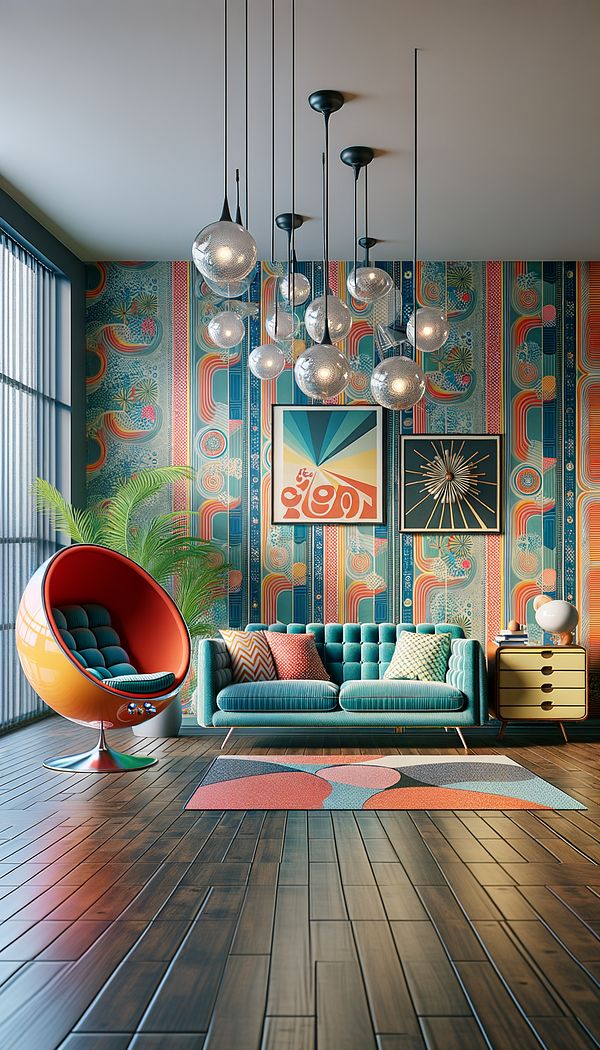What is Retro?
Retro refers to a style that draws inspiration from the past, specifically from the 1950s to the 1970s.
Description
Retro, in interior design, is a term that evokes a sense of nostalgia by incorporating styles, trends, and aesthetics from the mid-20th century, typically ranging from the 1950s to the 1970s. This era was a time of bold colors, dynamic patterns, and innovative materials which are now celebrated and reinvented in contemporary design settings. The retro style is characterized by the use of vibrant colors, geometric patterns, and iconic furniture pieces that mirror or pay homage to the past, while still blending seamlessly into modern environments. Despite drawing heavily on past styles, Retro isn't about creating a time capsule; rather, it's about selective incorporation of old-style elements into current designs to evoke a sense of familiarity and comfort, yet with a fresh twist. It often combines with other styles, such as modern or minimalist, showing that it's both flexible and versatile. Interestingly, as trends cycle, what is considered 'retro' evolves, making the style continually relevant.
Usage
Retro elements can be found in various contexts within interior design, from the choice of furniture types, such as egg chairs or vinyl couches, to wall treatments and finishes like wallpaper featuring bold, geometric patterns. It is also evident in the use of materials and color schemes; for example, bright, contrasting colors and materials like plastic or Formica are staples of this style. Lighting choices often lean toward designs from the target era, including lava lamps, sputnik chandeliers, and sunburst mirrors.
FAQs
-
Is 'vintage' the same as 'retro'?
No, 'retro' and 'vintage' are not the same. 'Retro' refers to new pieces that are styled to resemble the look and feel of a specific period, while 'vintage' refers to actual items from the past, typically at least 20 years old.
-
How can I incorporate retro elements into a modern home?
To incorporate retro elements into a modern home, focus on adding select pieces that convey retro style, such as a statement piece of furniture or decorative items with geometric patterns. Incorporate vibrant colors through accents and soft furnishings, and mix these elements with contemporary designs for a harmonious blend.
-
Are retro designs suitable for all types of spaces?
Yes, retro designs can be adapted to suit all types of spaces, from residential to commercial. The key is in the selection and integration of retro elements with other design styles to ensure they complement rather than overwhelm the space.
Practical Application
When incorporating Retro into your design, start with a neutral base in your space to allow the vibrant retro pieces to stand out. Consider adding iconic furniture pieces as focal points and complement them with retro-inspired art or accessories. Pay attention to balance and integration with modern elements to ensure the space feels cohesive and not cluttered. Finally, don't be afraid to experiment with color and pattern to truly capture the spirit of the era.
-
Design Styles478 articles
-
Furniture Types599 articles
-
Color & Patterns154 articles
-
Wall Treatments & Finishes157 articles
-
Wainscot ChairA wainscot chair is a type of wooden chair characterized by its paneled construction, often featuring intricate carvings and a high back.
-
Splint SeatA splint seat is a type of woven seat made from strips of materials.
-
Feng ShuiFeng Shui is an ancient Chinese practice of arranging living spaces to create harmony and balance with the natural world.
-
GouacheGouache is a type of paint known for its opaqueness and matte finish.
-
RegencyRegency refers to a style of interior design characterized by elegance, refinement, and an emphasis on symmetry and geometric shapes.
